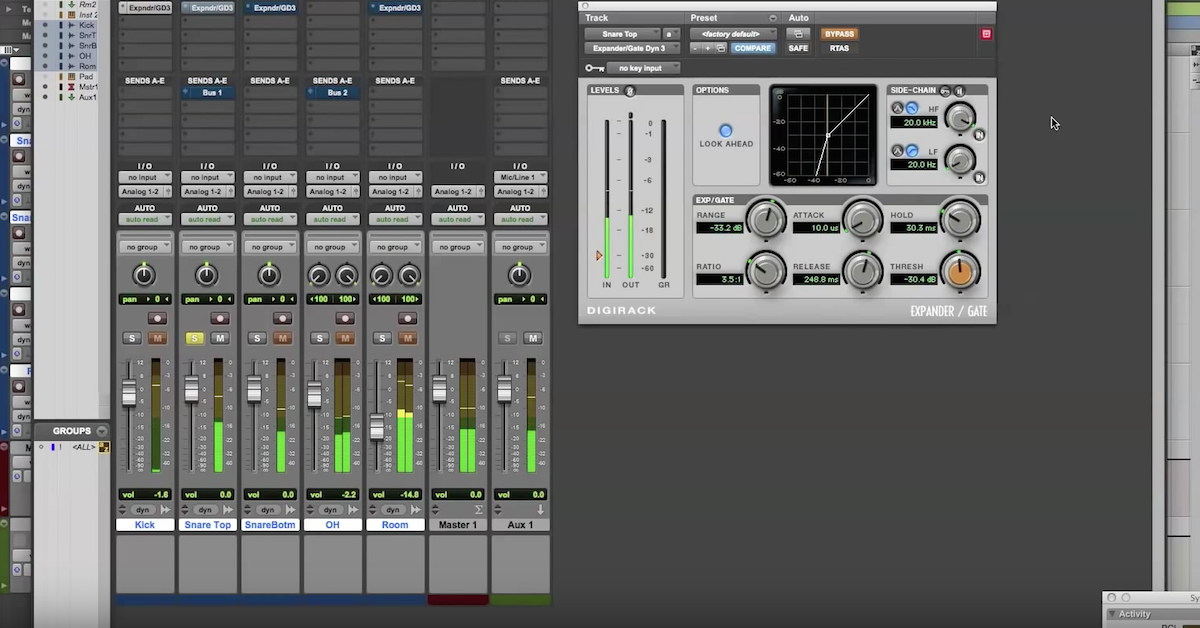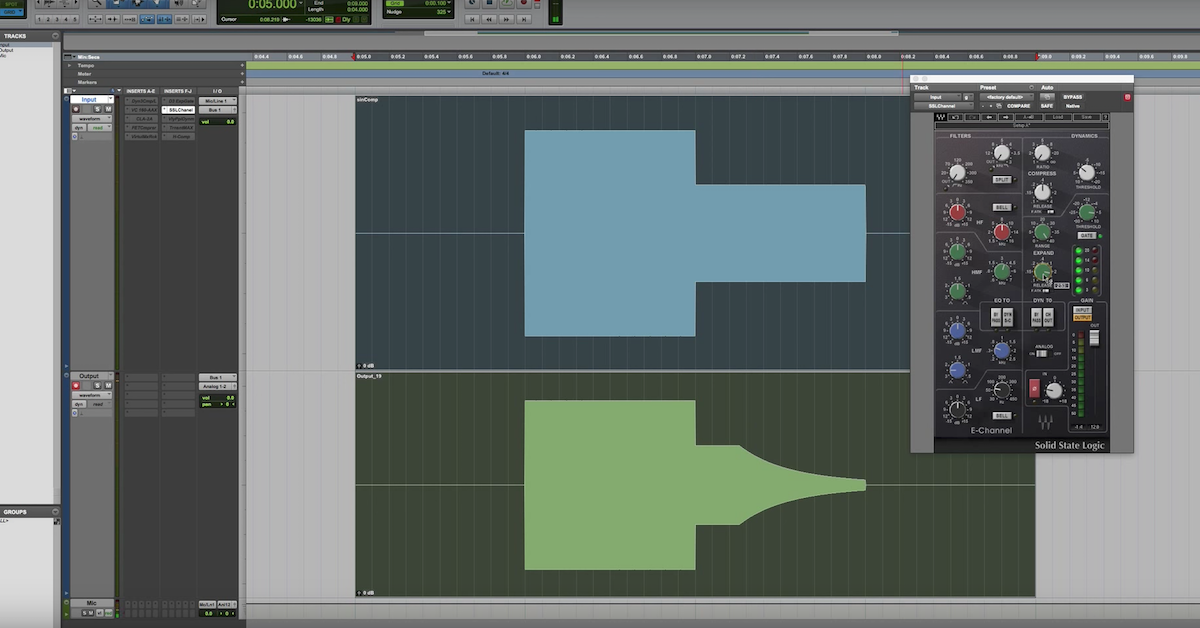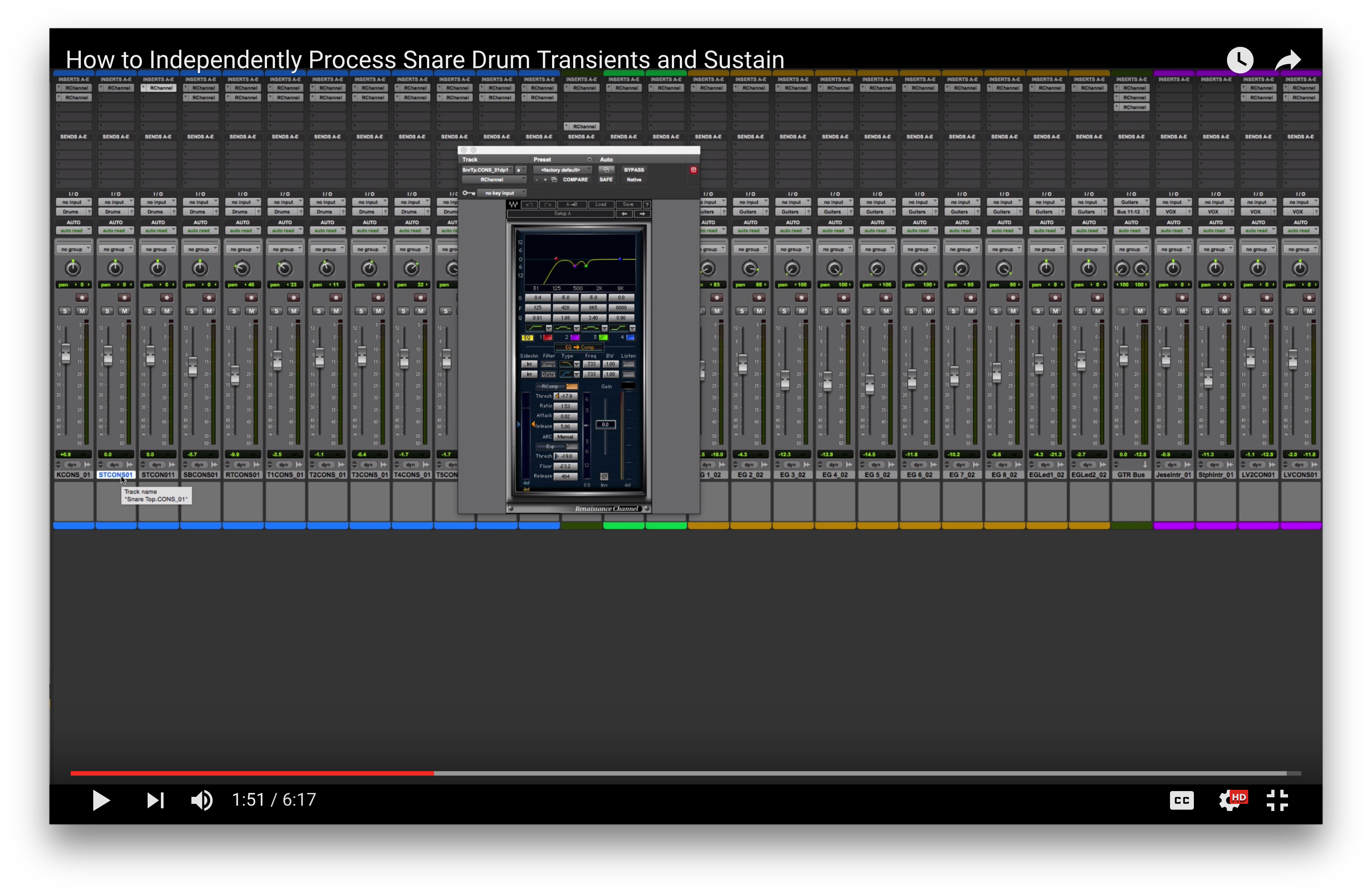What is Hysteresis?
I’ve got a lot of resources available for you. Make sure to check them all out.
So this video here is all about the topic of hysteresis. What is hysteresis? Why did Rupert Neve decide to include this weird, kind of out of the ordinary parameter on his consoles that now Brainworx has gone on to model and include in their bx_console?
This is a parameter that you don’t find on a lot of other plug-ins, and even on a lot of other gate or expander processors.
It is pretty cool to work with. You should understand what it is and then how to actually apply it and use it to your best advantage.
So here I’ve got this plug-in inserted on the snare drum track, and the idea of using it is I’m going to cut out on some of the background bleed of some of the other instruments.
So this is a multi-track drum recording with the snare top track. I want to block out the kick drum and the hi-hat as much as possible.
So here’s what it sounds like.
[snare]
Alright, so let’s go through the gate and then lead up to what is hysteresis and get into that whole thing.
So here on the gate, I’ve got the release knob. This is going to be the time it takes for the gate to kind of close when it’s done. Here’s the range. So this is the amount that I’m turning the signal down. As much as 30-40dB in this case. We’ve got the fast attack turned on so that when the gate opens, it’s going to open very quickly.
Then we get to the threshold. Your threshold is your basic parameter you find on dynamics processors. For a gate or expander, it’s the threshold where if the signal is above that level, it’s going to — the gate is going to allow the signal to pass through, but if the signal drops below this level, basically it’s going to cut it off or turn it down.
So that’s the expander. Then we get to the hysteresis. The hysteresis actually works in conjunction with the threshold. You need to understand it’s not its own parameter. It actually works alongside the threshold.
What it allows you to do is set a separate level for the gate opens, and when the gate closes.
So as of right now, I’ve got the hysteresis turned off. It’s just in the expander mode, which means it’s operating as a conventional expander/gate. But what I’m going to do is as I turn this hysteresis knob up, what it’s going to do is change the level where the gate opens.
The threshold then becomes where the gate closes.
So what this allows you to do is dial in the settings so that the gate only opens at the loudest hits, but then the threshold lets you let the tail of each hit, like the drum — each drum hit — go on for a little period of time, and then eventually close.
So what I’m going to do here is kind of show you step by step how to use these things.
First I’ll set the threshold as close as possible, and you’ll see that when I just set the threshold by itself, it sounds pretty good. It’s accomplishing most of what it’s supposed to do. But then when I bring in the hysteresis, it becomes a whole lot better of an expander/gate.
So listen to it now.
[snare with gate]
So threshold by itself without using the hysteresis, I had to dial up and turn up the threshold by a lot.
Now then what’s happening is as the signal drops below that threshold, then the release kicks in pretty quickly, so I don’t have a nice tail then to each hit. This is where the hysteresis comes in.
[snare with gate, adjusting hysteresis]
So the thing to understand is again, these two things work together. So you can’t just set the threshold and then turn up the hysteresis. What you need to do is work them one along with the other. So maybe turn up the threshold, then as you bring up the hysteresis, back off the threshold a little bit and turn up the hysteresis more until you find the sweet spot.
The threshold can’t be too low, and the hysteresis can’t be too high.
[snare with gate, with hysteresis]
So now I’m preserving more of the tail of each drum hit, but I’m successfully blocking out a lot more of that background noise, because I’m only opening the gate when the signal is very loud.
If I turn the hysteresis off, listen to what the threshold is like.
[snare with gate]
Now, if this is difficult to understand what these parameters are doing together, I’m going to bring up another plug-in that gives you a better illustration of how this actually works.
This is the C1 Gate. This is one from Waves, and it has the ability to set separate gate close and gate open levels.
So you can operate these things independently, or together.
Now, this is not labeled as hysteresis, but it’s accomplishing the exact same thing. Set the level where it opens here at the top, so a higher level, and then where it closes here at the bottom. You can accomplish the same thing.
Now, another parameter that shows up that’s helpful here on the C1 Gate is this hold level. Now, if I didn’t use a gate close, if I just had these things working together at the same level, you could pretty much get the same results by using this hold to kind of preserve more of the tail of each hit.
So depending on what kind of plug-in or processor you’re working with, if your plug-in, if your gate doesn’t have hysteresis, that’s not a problem. It probably has a gate hold level. Now, you can turn this up, and besides the release here, you can have the gate hold, and you know, this is your stock plug-in that comes with Pro Tools.
If you’re trying to accomplish that nice, smooth tail for each drum hit, mess around with the hold if you don’t have the hysteresis. You’ll pretty much be able to come along with the same thing.
Really, the hysteresis knob is just an old school way of doing the hold, where you didn’t have the ability to set the hold level, so now you have a separate threshold that you can set, but in the end, you come up with very similar kinds of results, it’s just kind of a weird user interface, or UX kind of experience that was built into the Neve consoles that you don’t find anymore on many other kinds of plug-ins.
So anyway, hopefully now you better understand what hysteresis is all about and why you could use it in certain situations.
So until next time, take care, guys.






